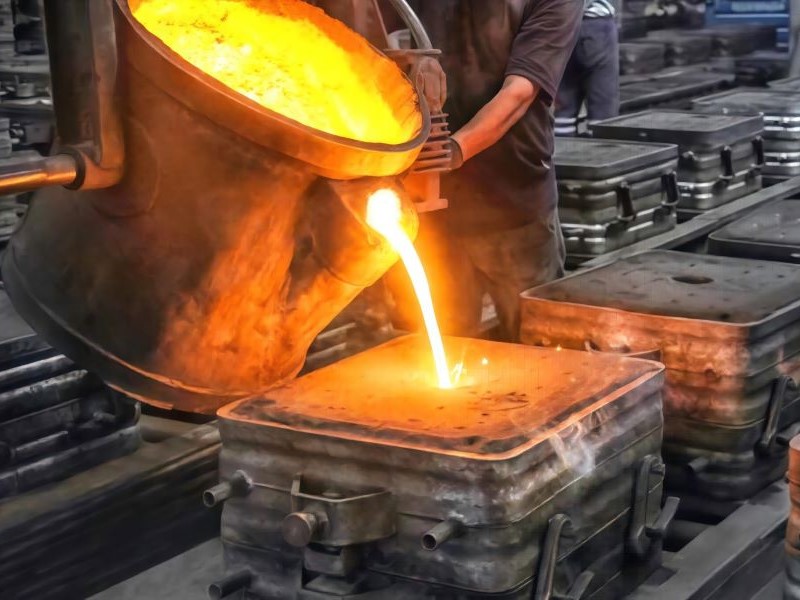Let's begin by painting a rough sketch of sand casting—an incredibly versatile method capable of crafting parts or components of any shape. The final product can go from being extraordinarily large to even incorporating internal passages. Sand casting, also known as mould casting, is a technique where sand serves as the primary filler material.
With roots tracing back to over 6000 years ago, the technique has seen numerous adaptations, yet its fundamental philosophy remains absolutely intact. The major evolutions primarily stemmed from the types of sand used in the mould casting process. Dive further in to discover more about the trio of sand types commonly utilized in casting.
Green Sand Casting:
The term "green sand" has been earmarked to portray a shallow sea-deposited sand embodying rounded green particles. In the world of casting, green sand (also referred to as clay) denotes a mould created by damp sand.
The green sand used to form moulds typically comprises of the following cocktail: Sand (75-85%); Bentonite (5-11%); Water (2-4%); Other materials (3-5%). You might find yourself drawn to the unique green hue of the sand, a spectacle resulting from varying amounts of glauconite minerals. Known for its porous quality, green sand has been proven as an effective absorbent of water and various minerals—an attribute that enhances the efficiency and convenience of irrigation and nutrient distribution.
Pros of Green Sand in Casting:
1.Green sand is arguably the most cost-effective moulding material.
2.It minimizes threat to the mould from thermal tearing when compared to other materials.
3.Given its non-baked nature, green sand is less likely to deform during the mould creation process.
Cons of Green Sand in Casting:
1.Products made from green sand typically exhibit a rough surface.
2.Surface gloss of green sand products is compromised with an increase in its weight.
3.It may lead to more casting defects due to its softer nature, such as residual sand and sand holes.

Sodium Silicate or Water Glass Casting:
Primarily composed of silicate salts, sodium silicate is popularly known as water glass or liquid glass. It finds extensive applications in diverse industries, including fire safety, textiles, wood treatment, and silicone production. Water glass inherently contains iron impurities, resulting in products that usually appear in shades of green or blue.
During the casting process, highly cautionary steps include letting CO2 pervade through the sodium silicate and then dehydrating it to make it solidify, particularly when creating a cavity or a solid core. It is critical that the sodium silicate is blended with other materials in the casting process to expedite decomposition for making the extraction of the mould easier. An ill-judged proportion can stunt the mould in the casting, leading to its failure.
Advantages of Sodium Silicate in Casting:
1.Sodium silicate, or water glass, is colorless, tasteless, and non-toxic.
2.No irritating or harmful gases are emitted during the casting process.
3.Sodium silicate does not generate any black or acidic pollution.
Shortcomings of Sodium Silicate in Casting:
1.Sodium silicate can be challenging to collapse or defragment.
2.Recycling used sodium silicate poses difficulties. Moreover, improper handling of the water glass could pollute the environment.
Resin Sand Casting:
Resin sand refers to a blend of quartz sand and resin. After combustion with other materials, it turns exceptionally tough and solid, resulting in hard moulds and cast iron components—collectively called resin sand casting.
Through a series of mixing and heating, the resin sand morphs into a smooth, solid mould. This solidity points towards fewer defects in the casting. However, it's not all rosy. The setbacks of resin sand include a high investment and sluggish production pace. To be precise, creating moulds with resin sand takes up a fair bit of time. It involves thorough blending of distinct sand types, followed by burning to yield the perfect mould. Furthermore, the ever-present need for replenishing the resin, despite it being a repeated expense, attests to the costs associated with resin sand.
Benefits of Resin Sand:
1.Resin sand exhibits good fluidity and compactability, offering opportunities for adjusting pop-up time.
2.Once cured, resin sand demonstrates high strength, preventing it from deformation in the subsequent processes.
Disadvantages of Resin Sand:
1.Resin sand emits an irritating odor during the moulding and casting processes.
2.It is significantly costlier than green sand.
Final Words:
With this, we hope you've gleaned a solid understanding of the various sands employed in the casting process. Our team of experts at Heng Rui Machinery can cater to any of your metal part or component production needs. Additionally, our technicians can guide you towards the most suitable plan for your demands.
For further insights, feel free to reach out to us or pop your thoughts into the comments section below. Join us for an enriching journey through the Casting realm that might potentially cater to your specific needs.

